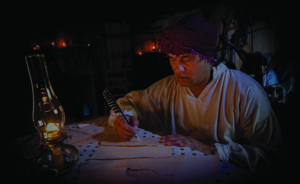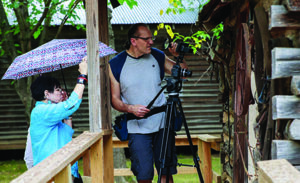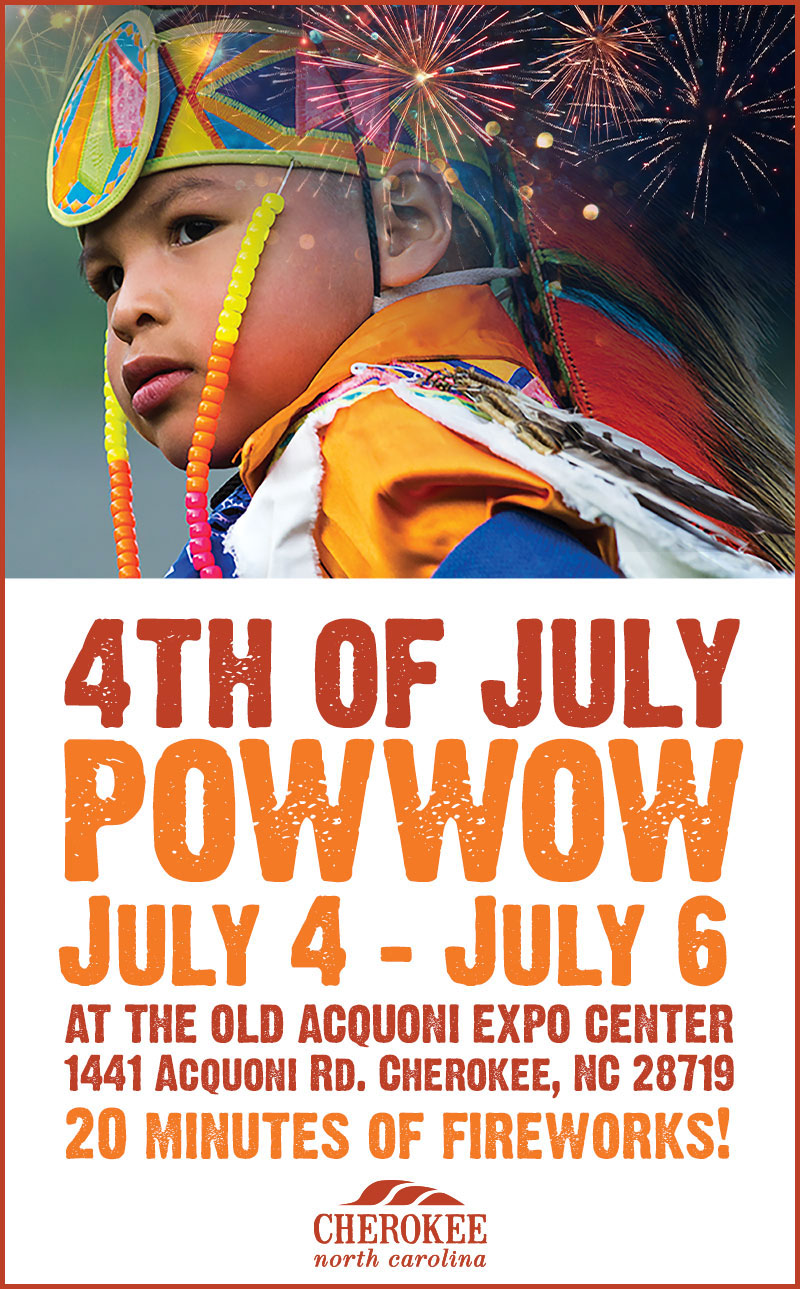By SCOTT MCKIE B.P.
One Feather Staff
This year (2021) is the bicentennial of the Cherokee Syllabary – a system of writing the Cherokee language developed over years by Sequoyah in the early 1800s. “Searching for Sequoyah”, produced by James M. Fortier and LeAnne Howe, will air on PBS stations nationwide starting in November and examines not only that major accomplishment but also the man’s intriguing life.

James Greg Bilby, a Cherokee Nation citizen, plays the role of Sequoyah in the upcoming documentary film entitled “Searching for Sequoyah”. (Photo by Karl W. Schmidt)
Howe, a member of the Choctaw Nation of Oklahoma, is an Eidson Distinguished Professor in American Literature and English at the University of Georgia in Athens, Ga. She noted, “What we were interested in showing in our documentary is that Sequoyah worked for years on perfecting the Cherokee Syllabary. And, he worked alone.”
She added, “Sequoyah didn’t speak English and so if you can imagine how difficult it was to create the Cherokee Syllabary, Sequoyah’s invention is all the more impressive. In fact, it’s genius.”
Filming on the documentary took the crew and producers to North Carolina, Tennessee, Oklahoma, and Mexico.
Fortier, a member of the Biigtigong Nishnaabeg First Nation (formerly The Ojibways of Pic River First Nation from Ontario, Canada), is an award-winning documentary film maker. He said the idea for “Searching for Sequoyah” was first hatched 19 years ago when Howe and himself were working on another documentary entitled “Spiral of Fire” which focused on modern-day Cherokee life.
“We filmed for over a month on pretty much every aspect of modern Cherokee life,” he noted. “But, obviously Sequoyah was all around us. His image or the Cherokee Syllabary were evident almost everywhere.”
Fortier said they never forgot the idea. “The idea sat at the back of our minds percolating for about 15 years before we acted on it. That was set in motion when LeAnne took a faculty position at the University of Georgia, Athens – smack in the middle of Southeast Cherokee traditional territory.”
The duo applied for and received funding from Vision Maker Media and started their project five years ago. “Early on in our discussions, we started talking about the need to incorporate Sequoyah’s living descendants into the film. I wanted to have them become storytellers themselves relating from their own family’s experience what they knew of the famous ancestor. And, of course, the mystery surrounding his death in Mexico was a big discussion point, revealing that for all the volumes of material written about him, the latter part of his life and certainly his death still remained a mystery.”
That mystery remained a focal point of the documentary. Fortier said, “Once we began peeling back the layers of his life, it’s easy to see what a dichotomy he became, one of the most famous, historical Indian figures in American history, yet there were all these holes, inaccuracies, outright fabrications, and unknowns in his ‘official’ biography.”
Fortier said that the stories of Sequoyah provide historical lessons. “Sequoyah was really a man of peace, a unifier and a great thinker and leader. He was also a visionary. He saw things as they were at the time for Cherokee people and he envisioned a much better way forward, and the key to bringing about that vision was his Syllabary. And, the effects of what he brought to the Cherokee people are still being felt today, 200 years later. So no, history is not stuck in the past, history is the here and now and when we open our eyes we can see it all around us in our modern world. So, I just hope this little film about an immensely historical person has the ability, if only for an hour, to stop some of us in our tracks and pay attention to what this amazing person did for the Cherokee people 200 years ago and why it still matters today.”

Howe, left, and Fortier begin filming re-enactment visuals of Sequoyah and his wife and daughter in their ‘cabin’ at the Cherokee Heritage Center in Tahlequah, Okla. (Photo courtesy of production)
Howe added, “Americans need to know the stories of the original people of the Americas who lived here thousands of years before white people ever set foot in the Americas. Sequoyah’s work lives on through stories and the people.”
Fortier doesn’t consider himself an expert on Sequoyah and noted that much of the knowledge he gained during research and filming was new to him. “I had never even known there were Kickapoos and Cherokees that migrated as far as into northeastern Mexico. Most of the facts we dug up were already discovered over the past 150 years or so, but they were so dispersed that no one ever compiled it all into one comprehensive presentation and certainly not in a documentary film. The unknowns we discovered in Mexico were not unknowns to the people there, it was just a matter of connecting the dots as best we could, and I think we did that in a way that has not been done before.”
The filmmakers both state that Sequoyah’s life and accomplishments warrant him being discussed and researched in the 21st century. “Sequoyah was a visionary,” said Fortier. “He was larger than life in many ways, yet fallible and ordinary too, just like the rest of us. I think many Cherokee people recognize that in him, he was both, he could be a brilliant unifying leader and a regular everyday Cherokee, just like them, and yet so much more. I think that’s the sort of hero, for want of a better word, most people can identify with. Perhaps, Cherokees see a little of themselves in Sequoyah, and because of that I think they draw inspiration from his achievements and will continue to revere him.”
Howe noted, “Watch the film. You can see it on their faces and hear it in their voices and the stories of the Cherokee Indians in the film. Sequoyah is their ancestor. For Indian people, our stories are alive. Our ancestors live on through us. This is the truth of ‘Searching for Sequoyah’.”






